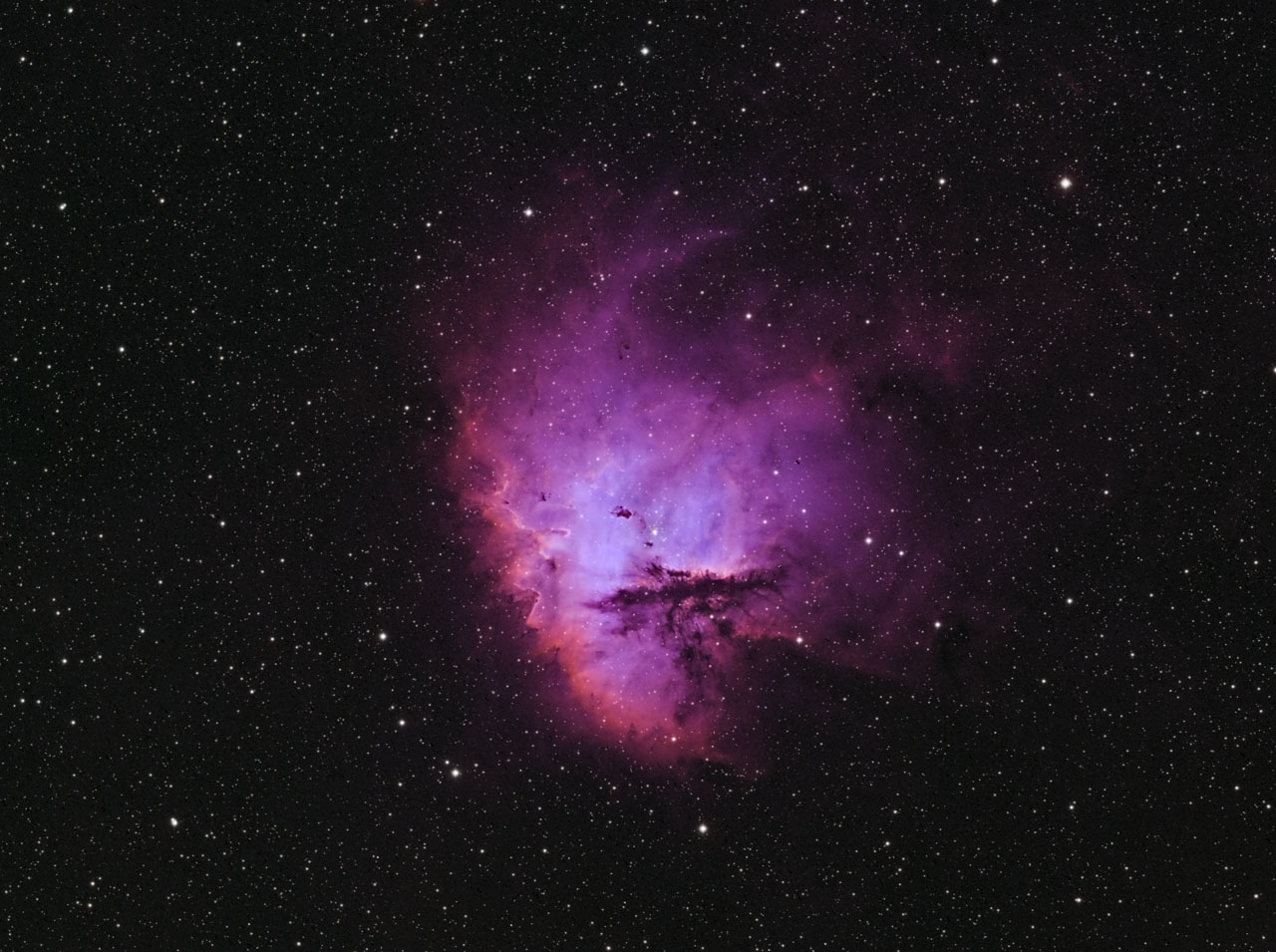The sky has been mostly clear of clouds lately, but often full of smoke from forest fires. At times it has been bad enough that we’ve had to close the windows to avoid the smell of smoke. But I found a couple of reasonably clear nights and decided to re-shoot the Pacman Nebula (NGC281), which I haven’t done in about 5 years. I don’t know when the “Pacman” name was first used to describe this emission nebula in Cassiopeia, but the video game character was created in 1980, so it is quite new in astronomical terms. The nebula was first discovered in 1883 by E.E. Barnard. It is about 9,200 light-years from Earth.
The image capture was done in my usual fashion for the home observatory, using narrowband filters for H-alpha, O-III, and S-II. That gives you 3 monochrome images that can be combined into a single color image in many different ways, but I have recently come to favor a technique that gives you a lot of flexibility and quality: The 3 monochrome channels are first assigned to red, green, and blue channels of a color image, in whatever order you like. In most cases, the H-alpha channel is much stronger than the others, and you can’t adjust the color very much without disrupting the color of the stars, so the next step is to remove the stars from the color image. This is done using a Photoshop “action” from “Annie’s Astro Actions”. The resulting image is imperfect and requires some manual clean-up, but it’s usually a reasonable process. Once the stars are eliminated, the color can be manipulated quite aggressively. In this case, the green and blue channels (S-II and O-III, respectively) were brightened considerably to better balance the red. The hue and saturation were then adjusted “to taste”. I ended up with a color scheme that is not terribly different from what I would have gotten with the more traditional technique, but has a somewhat greater variety of hues, and therefore better distinguishes the regions of the 3 elements. Finally, the stars are restored by applying the H-alpha channel as luminence. A minor downside to this approach is that the stars are entirely monochromatic, but there tends to be very little (real) color to the stars in narrowband images anyway. Color fringing around stars is the typical result of trying to color balance the nebulosity, and stars with no color at all is much better than stars with odd color fringes.
I’ll be away – and not doing any imaging – for the next week. I’ll have access to e-mail, but will be very busy, so please be patient if you need to reach me.
